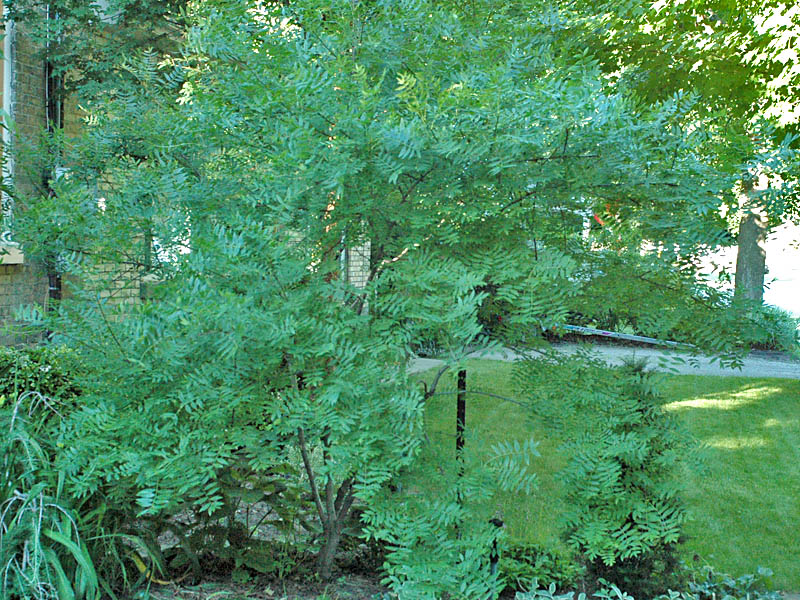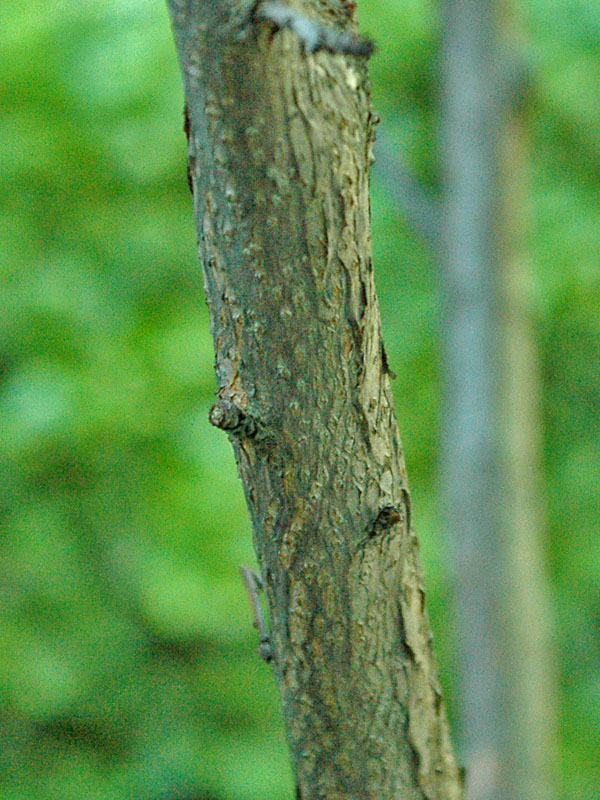| General Description | Xanthoceras sorbifolium is a small deciduous tree or large multi-stemmed shrub considered rare in America and Europe. |
| ID Characteristic | Large white flowers make it very recognizable during the spring, lime-sized fruit in the summer and autumn. |
| Shape | Upright, 'V'- shaped growth habit. |
| Landscape | It can be grown as a specimen or in groupings near the home (in the lawn or a shrub border). It may also be an effective background for spring flowering perennials. It is also grown for fresh cut flowers. |
| Propagation | By seed soaked for 24 hours (sometimes 48 hours is necessary) and gently nicking the seed coat near the pore, slowly shaving it away until you see the barest glimmer of white, being very careful not to cut the embryo. Re-soak for 12 hours and sow in moist peat/sand/perlite mix. Germination will usually occur in 4 - 7 days. May also be propagated by root cuttings with moderate bottom heat. |
| Cultivation | Tolerant of a wide range of conditions including full sun, partial shade, high pH, clay, sandy, loam, average / medium / well-drained soil and moderate to xeric moisture. It is a low maintenance plant and needs little water to survive. Protect from cold winds. Does not respond well to being transplanted as it sprouts quickly and puts down a very large root system. Renewal pruning is accomplished by removing the largest, oldest stems (generally 1/4 - 1/3 of the total stem mass) as close to the ground as possible. This will stimulate new shoots to develop below the cuts, creating a dense and pleasing habit. This type of pruning should be done when the plant is dormant (late autumn to early spring). It should be grown in a pot until you are ready to plant in a more permanent position. |
| Pests | Coral spot is a fungal disease that may occur if the wood is not ripened and consequently damaged by the winter cold. Otherwise this is a generally a problem-free plant. |
| Notable Specimens | The original plant may still be seen at the Jardin des Plantes in Paris, France. |
| Habitat | Hills and slopes in lean soils. |
| Bark/Stem Description | Requires summer heat in order for wood to fully ripen. The bark is grey-brown and mildly rough, cracking slightly with age. |
| Leaf Description | Lustrous, compound pinnate with 9 - 17 sharply toothed leaflets that are 12.7 - 30 cm long and persist into late autumn. Leaflets are alternate, linear-oblong and acute. Colour can range from shades of bright to deep green on the upper, glossy surface and a paler shade underneath. |
| Flower Description | Hermaphrodite (having both male and female parts), five-petalled, 2.5 cm in diameter, star-shaped, white with yellow centres, fragrant. Centres change from yellow to red or maroon upon pollination and with age, they fade to a deep pink. Flowers are borne from leaf axils in late spring and summer right after the leaves unfold. Clustered in lateral racemes 20 - 30 cm long. A certain amount of summer heat is needed to stimulate the production of buds which are produced on the previous year’s wood (see bark description). |
| Fruit Description | Large fruiting capsules are green, maturing to black and globose in shape with 4 chambers. They measure at least 6.3 cm in diameter and can be as large as a tennis ball. Each contains up to 12 black, shiny, edible seeds about 1.2 cm in diameter. The seeds resemble chestnuts or buckeyes and taste like macadamia nuts. Fruit is only produced if more than one plant is present to provide pollination. The fruit form in summer and persist into late autumn to early winter. |
| Texture Description | Overall a moderately textured plant. Leaves are slightly leathery and bark is mildly rough. |


